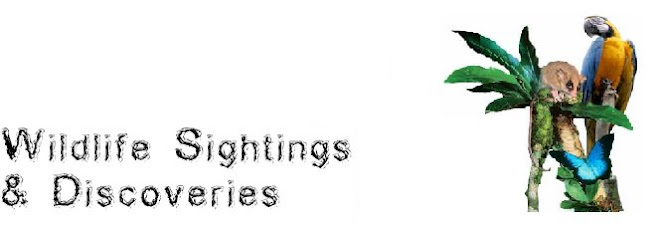Giant Panda (Ailuropoda Melanoleuca)Status: Endangered
Population Trend: Decreasing
Found: China
Range: The giant panda is confined to south-central China. Currently, it occurs in portions of six isolated mountain ranges (Minshan, Qinling, Qionglai, Liangshan, Daxiangling, and Xiaoxiangling) in Gansu, Shaanxi and Sichuan Provinces (about 75% of the population inhabits Sichuan Province). The panda's total range encompasses approximately 30,000 sq km between 102–108.3° E longitude and 28.2–34.1° N latitude. This range highly overlaps that of the Asiatic black bear (Ursus thibetanus), although the ecological requirements of these species differ appreciably (Schaller et al. 1989).
Significant climatic changes combined with thousands of years of cultivation of lower and flatter habitats and hunting by humans caused the giant pandas’ range to shrink to a remnant at the rugged western fringe of a once more expansive area (Schaller et al. 1985). This species previously ranged throughout most of southern and eastern China, with fossils indicating presence as far south as northern Myanmar and northern Viet Nam and stretching north nearly to Beijing. Another related species, the pygmy giant panda (A. microta), now extinct, also once existed in this area. As recently as 1850, giant pandas existed in eastern Sichuan and Hubei and Hunan Provinces. By 1900, they occurred only in the Qinling Mountains and along the edge of the Tibetan plateau. Soon after 1900, the expansion of agriculture upstream along principal river valleys separated this distribution into separate regions in the six mountain ranges.
Population: Three range-wide surveys have been conducted, in the mid-1970s, mid-late1980s, and 2000–2002. All surveys were based on incidence of sign, but techniques varied, so results are not directly comparable. Present best estimates indicate a total wild population between 1,000–2,000. Greater protection of forests and from poaching in recent years suggest that panda populations should be increasing, but this has not been confirmed empirically.
Results from the most recent survey, coordinated by the State Forestry Administration (SFA) of China and World Wildlife Fund (WWF), indicated a total population of ~1600 individuals. This is over 40% higher than previous estimates. It is believed that the increase in the estimated number of pandas is due largely to differences in survey methodology and a larger search area, as well as possibly an actual increase in panda population size in some areas. Conversely, in other areas, habitat conditions were deemed to be worse and panda numbers lower in 2000–2002 than in the 1980s survey.
The most recent population estimate was based on differentiating individual pandas from measurements of bamboo fragments in scats. It is known that different age classes of pandas have different bite-sizes of bamboo (Schaller et al. 1985), but the validity of differentiating individuals of the same age class based on bite-sizes has not been well tested. Recent information on DNA-identified scats suggests that the bite-size method may underestimate population size in some cases (e.g., dense populations; Zhan et al. 2006).
Many surviving wild giant panda subpopulations have fewer than 50 individuals (Loucks et al. 2001). No major reductions in the genetic diversity of these populations is apparent, although they likely experienced modest genetic losses from a much larger ancestral population (Lü 2001). Some controversial research suggests that the Qinling (Shaanxi Province) population is a genetically isolated and distinct subspecies (Wan et al. 2005)

Habitat and Ecology: Giant pandas occupy temperate montane forests with dense stands of bamboo at altitudes of 1,200–4,100 m asl (more typically 1,500–3,000 m asl; Hu and Wei 2004). Habitat use depends both on the type and density of bamboo, the overstory (which influences the growth of bamboo), and the hillslope (Reid and Hu 1991). Giant pandas do not hibernate but they generally descend to lower elevations in the winter (Liu et al. 2002), and may take temporary shelter in hollow trees, rock crevices and caves.
Giant pandas spend about 55% of the day (both daytime and night-time) feeding, mainly on bamboo (Schaller et al. 1985, 1989). Bamboo comprises 99% of their diet. They utilize over 60 species of bamboo, but 35 species comprise their main food source (Hu and Wei 2004). They often use different species of bamboo in different elevational bands, varying use with the seasons (Pan et al. 2001, Loucks et al. 2003)
Pandas are often erroneously believed to be poor breeders, an impression rooted in the previous disappointing reproductive performance of captive animals (Lü et al. 2000). Studies of wild pandas, however, indicate that their reproductive rates are comparable to those of some other species of bears (Garshelis 2004, Harris 2004, Wang et al. 2004). Moreover, captive populations in China are now reproducing well.
Giant pandas are usually solitary, except during the mating season and while rearing a cub. During the March–May breeding season, females may breed with multiple males. Birthing, often in rock dens or hollow trees, occurs in August–September (Schaller et al. 1985, Zhu et al. 2001). One or two cubs are born, but the mother raises only one.
Threats: Restricted and degraded habitat is the greatest threat to giant pandas. Population fragmentation exists on two scales — six mountain ranges separated by agriculture, and within these, fragments of bamboo forest separated by patches of cleared lands and forest without a bamboo understory. The giant panda's range contracted as trees were removed in logging operations and land was cleared for farming. Populations of pandas thereby became small and isolated, and confined to high ridges, hemmed in by cultivation.
Chinese authorities have established a network of panda reserves, and linkages now exist among some of these, but small population size and small total range remains a threat to the viability of this species. Moreover, in some reserves, and especially in panda range outside reserves, habitat has become degraded by intensive human use (Liu et al. 2001).
A further threat to pandas relates to their reliance on bamboo for food. Bamboo is subject to periodic, synchronous (and hence large-scale) flowering and die-off (at intervals of 15–120 years). Before significant human encroachment of their habitat, pandas could move to areas with healthy bamboo when a die-off occurred. Studies following the latest major bamboo die-off in the early 1980s indicated that pandas were still able to survive by finding patches that had not flowered, and also by moving to alternate habitats and feeding on less-favoured species of bamboo (Johnson et al. 1988, Reid et al. 1989).
Poaching of pandas was a serious problem in the past, but it has greatly diminished, and is no longer considered a major threat. Markets for panda skins have virtually disappeared, and penalties for poaching pandas have become far more severe (including death sentences in some cases). Panda parts are not used in Traditional Chinese Medicine. However, giant pandas are still sometimes killed in snares set for musk deer and other species.
Conservation Actions: Giant pandas are considered a threatened and precious species in China. They are listed under Category 1 (maximum level of protection) of the Chinese Wildlife Conservation Law of 1988 and on Appendix I of CITES. In 1989 the Chinese Ministry of Forestry (now SFA) and WWF drafted a joint national conservation plan for the giant panda, which was eventually adopted by the Chinese government in 1992. This plan now guides conservation initiatives for this species.
Since poaching of pandas has been largely controlled, the major conservation issue is restoring their habitat (Reid and Gong 1999, Lü et al. 2000). Previous considerations to clone pandas have been largely abandoned. There are still plans to release captive animals (experimental tests of this are presently occurring), but this effort addresses mainly a problem of overcrowding in captivity (due to enormous success in captive breeding) rather than the wild situation. Reintroduction of captive animals may be limited by lack of suitable release sites with adequate habitat but few or no pandas, which are necessary conditions to avoid possible transmission of disease and social disruption of the wild population.
A concerted effort has been made to increase both the quantity and quality of panda habitat. Beginning in 1963, forest reserves were established specifically for the conservation of giant pandas. By 1990, 13 panda reserves had been established — presently there are nearly 60 (under either federal or provincial jurisdiction). Increasing linkages among these reserves is a conservation priority (Loucks et al. 2003).
In addition to creating new reserves, China has worked to increase and improve forested area outside reserves. Following extensive flooding in 1998, tied directly to deforestation, China implemented the Natural Forest Conservation Program to enhance forest cover throughout major river basins; this included a ban on logging in natural forests. Additionally, a “Grain-to-Green” policy has forced farmers to abandon agricultural fields on steep slopes and replant these areas with trees (for which they are given grain and cash subsidies). As a result of these policies, China has become first in the world in terms of forest area gained per year (FAO 2006). The suitability of many of these newly forested areas for pandas, though, is still questionable. Additionally, the rising pace of economic development, particularly in presently undeveloped areas, has created more road and hydro-power construction, causing more forest fragmentation.










.jpg)